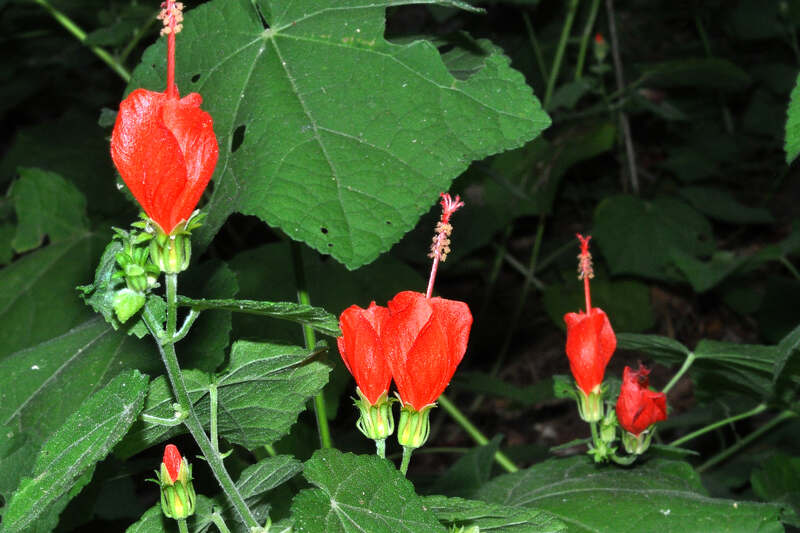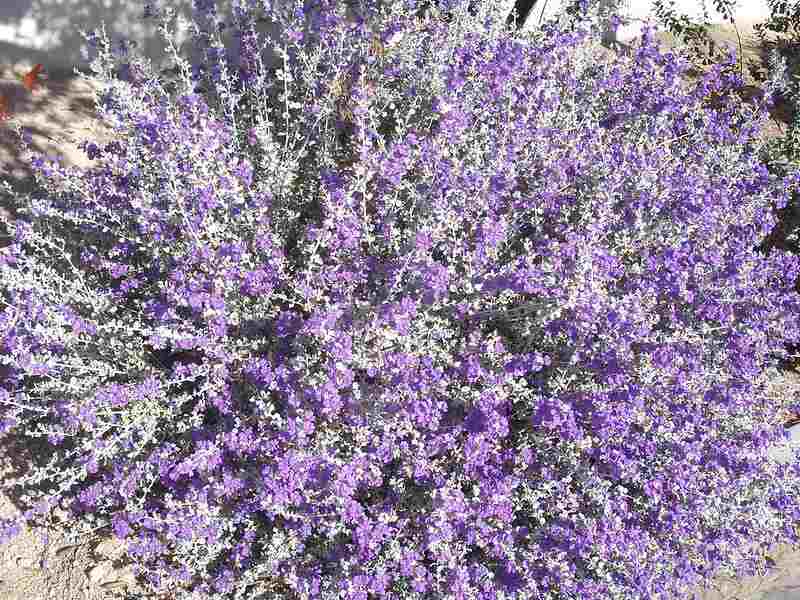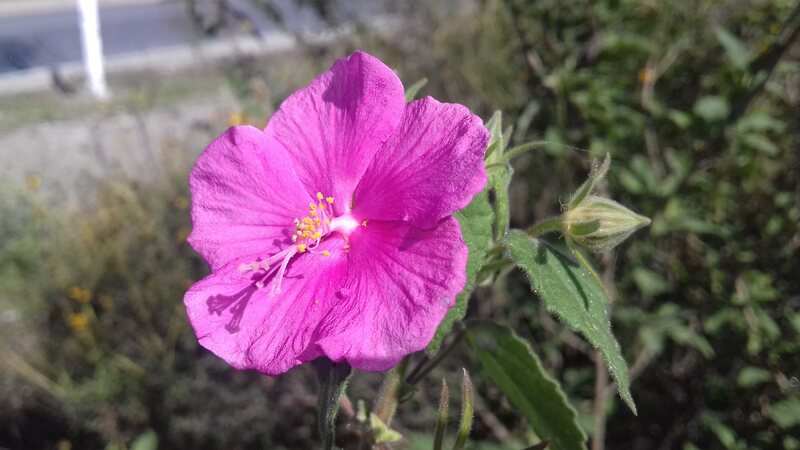Best Native Plants for Plano, Texas
BY STUART KUSHNER | APRIL 6TH, 2023 | LAWN CARE, PLANO, TEXASAre you working on some landscape design but don’t know where to start? Get some native plants. They evolved in your area, making them well-equipped to handle the local climate.
What are the advantages of using native plants in North Texas? There are several:
- They provide a habitat and food for birds, bees, butterflies, and other wildlife.
- They’re drought-tolerant, letting you conserve water.
- They’re adapted to the ecosystem, so they require no special pampering or fertilizing.
- They add diversity to the ecosystem while keeping it healthy.
When choosing new plants, remember that Plano, and the rest of Collin County, sit in hardiness zone 8a, meaning its coldest temperatures range from 10 to 15 degrees Fahrenheit.
In this article:
Mexican Plum (prunus Mexicana)

Photo Credit: Robert Nunnally / Flickr / CC BY 2.0
Plum lovers, the Mexican plum tree is for you! This tree sprouts white flowers in spring and plums in the fall. It grows up to 25 feet tall at maturity, making it a good choice for small gardens.
The Mexican plum tree is a favorite with pollinators and, according to Texas A&M, is drought-tolerant. A fun fact is that this tree is usually the first to flower in March, marking the end of winter in Texas.
Plant type: Tree
Sun: Full sun to partial shade
Soil: Adapts to sandy, loam, clay, or limestone. Prefers well-drained soil
Duration: Perennial
Water needs: Medium
Mature height: 25 feet
Scarlet Sage (Salvia coccinea)

Photo Credit: David J. Stang / Wikimedia Commons / CC BY-SA 4.0
As its name suggests, scarlet sage features a spiraling pattern of scarlet flowers. Hummingbirds love the nectar these flowers produce (this plant is also called hummingbird sage for this reason), as do butterflies and bees.
Like most types of sage, scarlet sage thrives in full sun but can tolerate shade and needs well-drained soil. It doesn’t do well in cold weather, so wait until the soil is warm before planting it.
Plant type: Flowering plant
Sun: Full sun, partial shade, shade
Soil: Sandy, loam, clay loam, rocky, caliche type
Duration: Annual, but usually reseeds easily
Water needs: Moderate
Mature height: 1-3 feet tall, 1 foot wide
Turk’s Cap Red (Malvaviscus arboreus var. drummondii)

Photo Credit: William Farr / Wikimedia Commons / CC BY-SA 4.0
Turk’s cap red is one of Texas’ most popular ornamentals. In the summer and fall, the petals of its bright red flowers fold into each other, forming a closed bloom. Hummingbirds and butterflies love them.
Once established, Turk’s cap is drought-tolerant. Its red berry-like fruit is edible either raw or cooked, and it tastes like an apple. It’s considered a Texas Superstar plant because it grows exceptionally well in Texas’ harsh conditions.
Plant type: Annual
Sun: Full sun, partial sun, shade
Soil: Sandy, loamy, clay, limestone
Duration: Perennial
Water needs: Medium
Mature height: 2-3 feet tall (up to 9 feet), 3-5 feet wide
Blackfoot Daisy (Melampodium leucanthum)

Photo Credit: Renee Grayson / Flickr / CC BY 2.0
The blackfoot daisy is the perfect plant for edging beds or rocky outcroppings. It can handle extreme cold and extreme heat, and it’s said to be deer-resistant.
Blackfoot daisies are covered in narrow leaves and white, daisy-like flowers from spring to fall. They also don’t need much water, but they need well-draining soil.
Plant type: Perennial
Sun: Sun, part shade
Soil: Dry, rocky, calcareous
Duration: Perennial
Water needs: Low
Mature height: 6 inches to 1 foot tall and wide
Texas Sage (Leucophyllum frutescens)

Photo Credit: time anchor / Flickr / CC BY 2.0
Texas sage is the official shrub of Texas. It’s a low-maintenance shrub that can withstand heat and drought. However, it requires full sun to bloom and remain healthy, and it doesn’t like shade. It prefers alkaline, well-drained soil.
Though wide varieties of Texas sage exist, the most common ones have gray-green leaves with light lavender flowers.
Plant type: Shrub
Sun: Full sun
Soil: Well-drained alkaline soil or acidic soil with added dolomitic limestone
Duration: Perennial
Water needs: Low
Mature height: 8 feet
Prairie verbena (Glandularia bipinnatifida var. Bipinnatifida)

Photo Credit: mikeumo / Flickr / CC BY-ND 2.0
Prairie verbena is a short-lived perennial prized for its purple flowers and a long blooming season from March to December. It attracts birds and butterflies and is deer resistant. Additionally, prairie verbena works well as either a groundcover or along walkways and paths.
Plant type: Flowering plant/wildflower
Sun: Full sun, partial shade
Soil: Clay, loam, or sand, well-drained
Duration: Perennial
Water needs: Low
Mature height: 6-12 inches tall and 1-2 feet wide
Pavonia (Pavonia lasiopetala)

Photo Credit: Pxhere
Also known as the rock rose, the pavonia is a popular plant in Texas. It has a long bloom period (from spring to fall), accepts full sun to half shade, and thrives in numerous soils and irrigation conditions. It grows pink hibiscus-like flowers that open in the morning and close as the temperatures rise.
Plant type: Shrub
Sun: Full sun, partial shade
Soil: Rocky, sandy, clay, loam
Duration: Perennial
Water needs: Low
Mature height: 1.5-4 feet tall and 3 feet wide
FAQ About Native Plants in Plano
After planting, water your native plants once a week for six months. Skip watering each week it rains. When summer arrives, water any plants that show signs of heat stress. Otherwise, let Mother Nature do the rest.
It’s not recommended that you gather native plants from the wild, and in some states, it’s illegal. Because transporting native plants is a delicate process, buying them from a nursery is recommended.
The Center for Plant Conservation states that more than 850 species of native plants are endangered. You need a special permit to dig up endangered plants.
The more local, the better. Don’t freak out if you can’t find the perfect plants. Start with plants native to your county or state and go from there.
The Final Word
After finding the right plants, your lawn is next. Complement your yard with one of the best grass types for Plano. Then hire one of Wikilawn’s local pros to do the work for you.
Main Image Credit: Pixnio